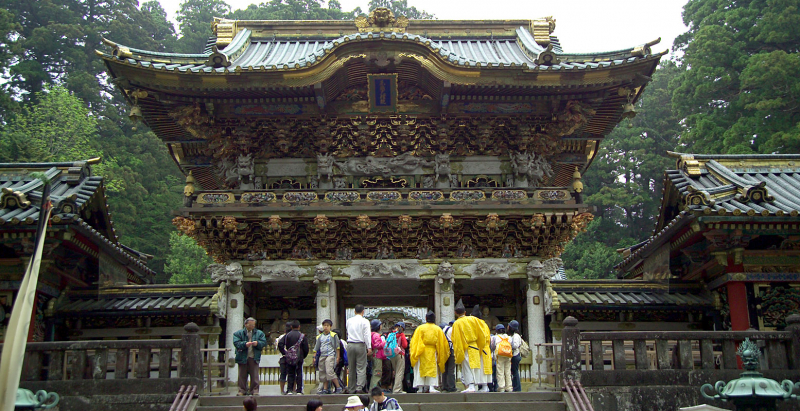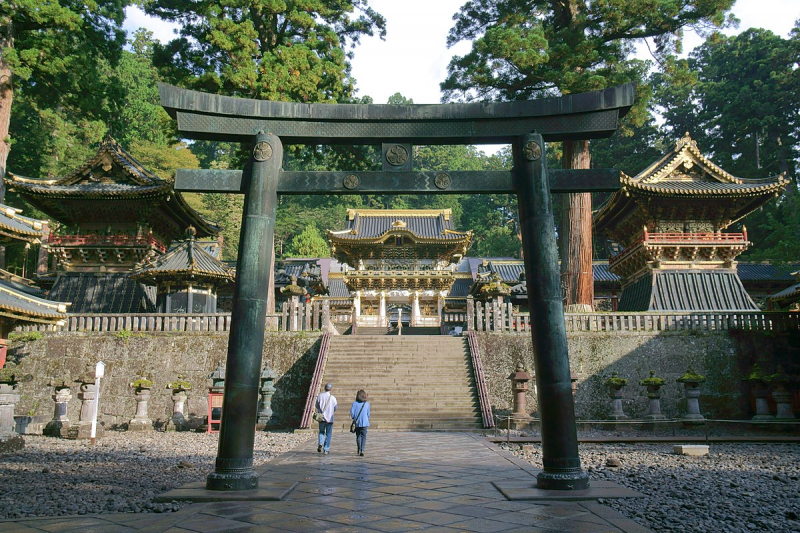Nikkō Tōshō-gū
Nikkō Tōshō-gū is a Tōshō-gū Shinto temple in the Japanese town of Nikk, Tochigi Prefecture. Nikkō Tōshō-gū is part of the Shrines and Temples of Nikkō UNESCO World Heritage Site, together with Futarasan Shrine and Rinnō-ji, with 42 shrine structures included in the nomination. Five of them have been classified as Japanese National Treasures, and three more as Important Cultural Properties.
Tōshō-gū honors Tokugawa Ieyasu, the founder of the Tokugawa shogunate. It was first constructed in 1617, during the Edo era, while Ieyasu's son Hidetada was shōgun. During the reign of the third shōgun, Iemitsu, it was expanded. Ieyasu is enshrined there, and his remains are also interred there. Tōdō Takatora, a Tokugawa retainer, established this shrine.
The Tokugawa shogunate led a dignified procession from Edo to the Nikkō Tōshō-gū via the Nikkō Kaidō during the Edo period. The shrine's annual spring and autumn festivals, dubbed "processions of a thousand warriors," recreate these events. The Cedar Avenue of Nikkō, a row of towering trees along the street, adds to the charm.
Five structures at Nikkō Tōshō-gū are designated as National Treasures of Japan, while three more are designated as Important Cultural Properties. Furthermore, two swords in the shrine's possession are National Treasures, and numerous other objects are Important Cultural Properties. The beautifully adorned Ymeimon, also known as "higurashi-no-mon," is one of the Tōshō-gū's most famous structures.
The latter moniker implies that one could stare at it till dusk and never get tired of it. The surface of the tower is decorated with deep relief carvings painted in vibrant hues. The karamon with white embellishments is the next gate. A woodcarving of a drowsy cat, "Nemuri-neko," credited to Hidari Jingor, stands nearby.
The first five-story pagoda was provided by a daimyō in 1650, but it was destroyed in a fire in 1818 and rebuilt. In ascending order, each story represents an element–earth, water, fire, wind, and aether (or emptiness). A central shinbashira pillar hangs from chains inside the pagoda to reduce seismic damage. Hundreds of stone steps lead through the cryptomeria forest to Ieyasu's grave. At the summit of the torii is calligraphy attributed to Emperor Go-Mizunoo. Tokugawa Ieyasu's remains are kept in a bronze urn.
Location: 2301 Sannai, Nikko, Tochigi Prefecture, Japan












